The Early Days of Building a Farm
The winter here has been a cold and dreary one. Thankfully, our aggressively-expanding seedling starting which has completely taken over our living room has filled our house with life and light and excitement!
Seed Starting
After taking Lisa Mason Ziegler’s The Basics class last fall, I felt fully prepared to dive into the new year with a big calendar, a large collection of seeds, and most of all — a plan.
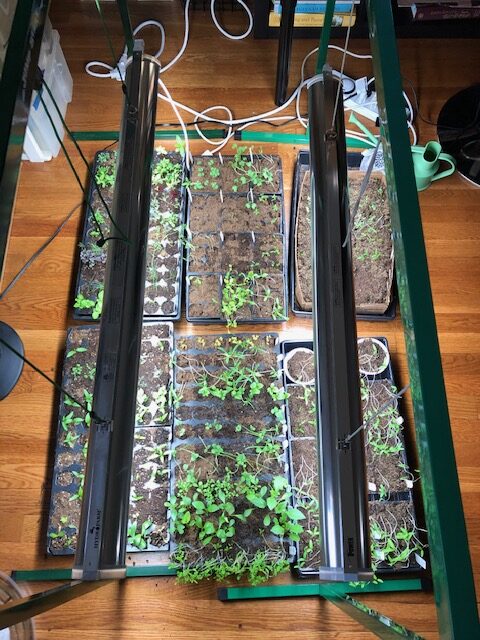
In early January 2022, we decided to expand our annual cut flower options, as the likelihood of our offering events this year was already starting to dwindle. After spending a few months working with our engineer on our site development plan, we were told in no uncertain terms that we would not be able to complete the necessary steps to be permitted to host events on our property this year. While not entirely surprising due to the numerous county and state requirements we are required to follow to complete the development, it was a disappointing setback. But with that in mind, we had to refocus our energy towards a very ambitious flower growing plan.
We knew we would need volume and would need it throughout the year to help offset our starting costs and updating the property. And so I dove back into my class materials – along with my notes from Joe Lamp’l’s Master Seed Starting course and started to order in the lights and equipment we would need.
Without a barn or greenhouse on the farm, we knew we would need to adopt a room for seed starting in our house, and our rather large and unused living room seemed the logical choice. We started with two single floor lamp systems I had from back in our Cheverly house, which typically can support eight trays of plants, four per light.
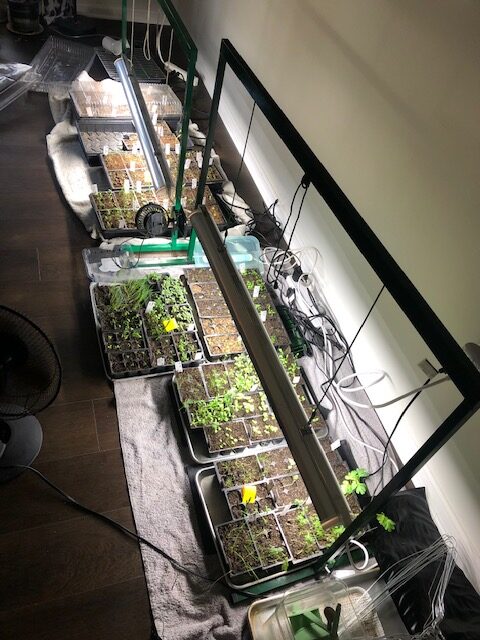
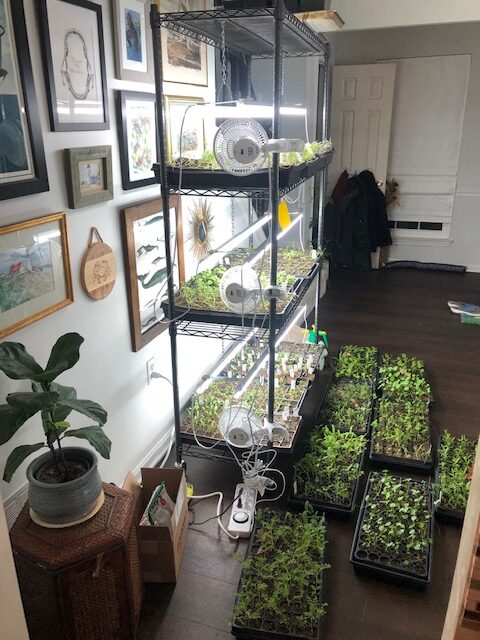
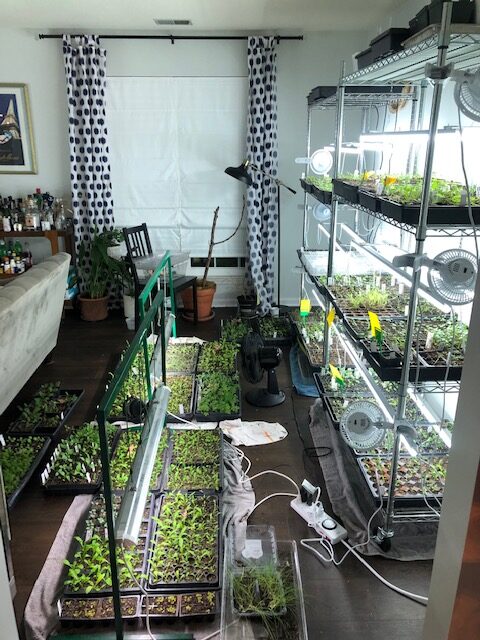
From two single lamp floor systems, we expanded in late February to an entire rack with 4 shelves and 3 sets of lights — enough for 12 trays under grow lights and an additional 4 that can be grown on top without added light. Then one became two – we started to remove artwork from the walls to avoid getting damaged from the grow lights or humidity. Then two became three – adding the third to the opposite wall. And so, week after week, we sowed and seeded and added more and more plants to the late spring listing: Queen Anne’s lace, dara, cress, mignonette, cosmos, snapdragons, yarrow and more.
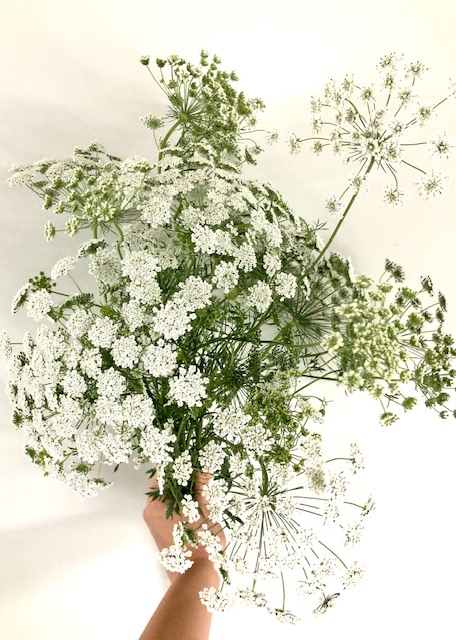
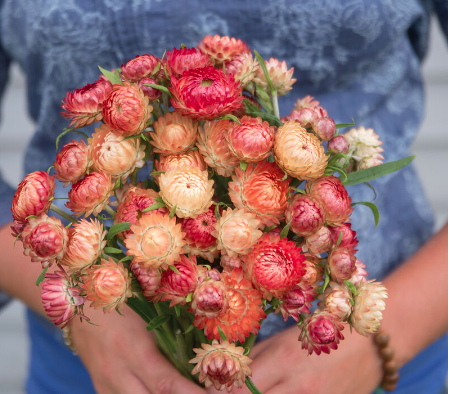

The seeds we are starting now will likely bloom in late spring/early summer. While some in the mix are considered “cool flowers” — aka cool/cold hardy annuals — like snapdragons and queen anne’s lace – some of our summer flowers like rudbeckia and strawflowers need a longer development period in the ground before they bloom.
Field Preparations
While our property was mostly cleared fields when we purchased it, we knew that did not mean it was ready for planting. The property had been farmland previously, but had been mostly abandoned for 40 or so years. In early March, we hired a neighbor with an extremely large and powerful tiller to till the whole farm field that we planned on growing in. After decades of neglect and nature taking its course in the best and worst ways, the heavy, clumping grass needed to be lifted, and our dense clay soil needed to be broken up to allow us to start amending it with compost and building beds.
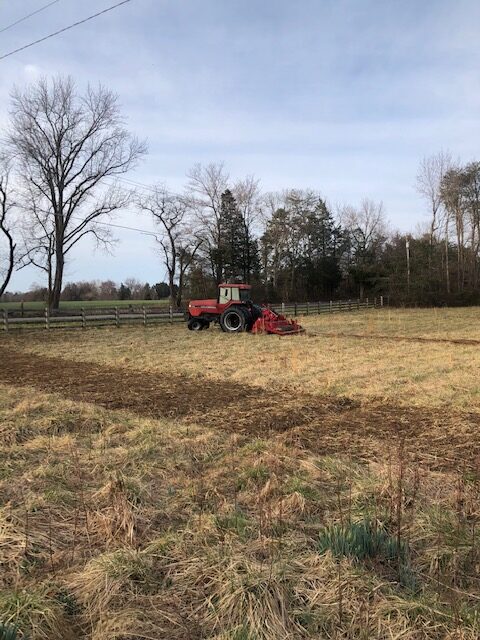
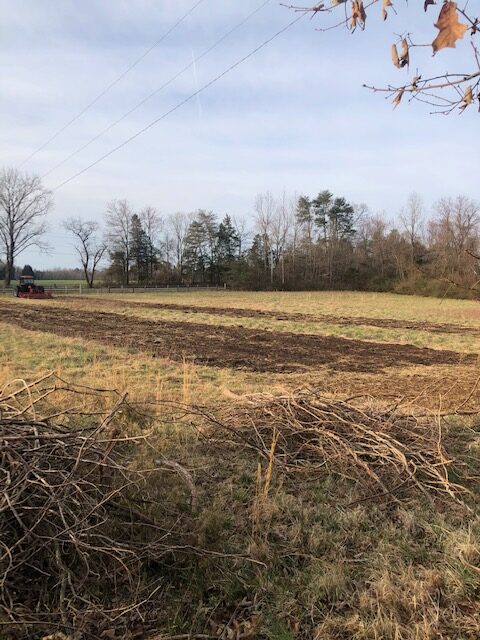
We intend to be a low/no till style farm, which means we do not plan to use heavy machinery to “flip” beds when we are done with crops or chop up the soil in between sowings. Tilling is the more traditional method of farming, and has its short term benefits in creating super light and fluffy soil that is easier to plant in. However, this traditional method has a very serious negative impact on soil health (yes, soil should be healthy too — it isn’t inert!) along with the life within it.
To simplify it somewhat, you are looking for soil that can hold moisture and nutrients on its own, that can be light enough to allow things to germinate and grow easily, and which is not densely packed or compacted, thereby reducing the plant or soil life’s access to all the things we humans also need — water, air, and food.
So how does this change the way we will grow?
That means we start by tilling now – to break up the soil, creating air pockets where we can add organic matter like compost and prep our planting areas. Organic matter like manure or compost feeds the soil, and healthy soil means healthy plants. Once the beds are created, rather than ripping out entire plants — which breaks up the soil structure — we will cut down crops to the soil level and allow their roots to die off naturally in the soil. We then plant beside or around the old plant. This keeps the soil structure intact by not creating huge holes/pockets where the roots have been removed, helping new young plants to be more stable within their planting space. This also provides a great source of organic matter (i.e. nutrients) for free! We allow the roots of the old plant — which have just spent months mining all the nutrients from that soil — to naturally break down and release back into the soil for the new plants to absorb.
The bigger idea from here is that you don’t end up “digging” into the soil with a fork or “flip” a bed to make the soil lighter and fluffy again for every planting. This disturbs or, at times, damages the microbial life in the soil along with its natural ability to hold on to air, water and nutrients.
It is not always the most convenient method for farming, as technically no till means that you are not supposed to rip out a plant or root from the soil – not even weeds. Those are also cut down to the ground level and their roots are meant to break down naturally. However, there are some invasive plants that grow by rhizomes (think really hearty vines underground that spread like crazy), which keep spreading deep under the soil line. Bermuda grass is one that we have in spades.
This means until we’ve cracked the code on how to get rid of it without ripping up the soil, we will do what is referred to as “low till.” We plan to leave the roots in the soil, but dig out what invasives we don’t want when necessary. The overarching point is that the better we treat the soil now, the better it will be for our plants — and our environment down the road. As the no till conversation is a much, much bigger topic, I’ll dive further into this in another post at a later date.
Early Spring Surprises
While taking over our entire living room was not the most attractive choice when considering the prospect of entertaining guests, it was the ideal option for ensuring we had a temperature-controlled space we were forced to interact with every day to monitor the health and progress of our plant starts. In just a few weeks, they will be ready to get planted, and our next succession of seed starting can begin. After hardening them off over the course of a week — on the front porch just off the living room — our plant babies will be ready to move out into the field.
In the meantime, we are enjoying the surprise collection of daffodils we have found in what will be our ceremony grove space — just beneath the umbrella of our specimen oak tree. We anxiously await the last frost date in a few weeks and are ready for all the beauty spring will be bringing our way!
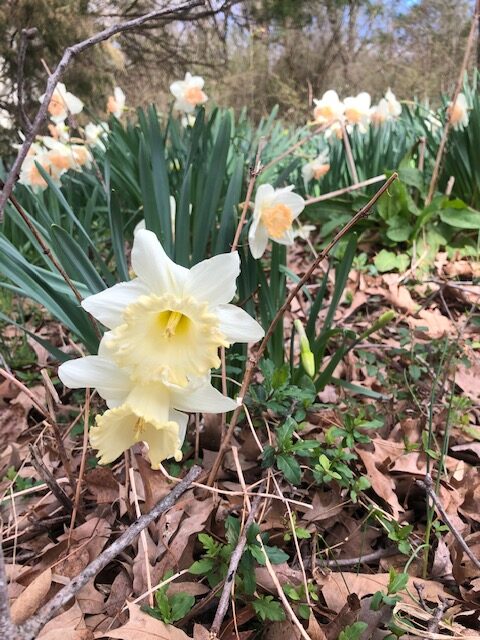
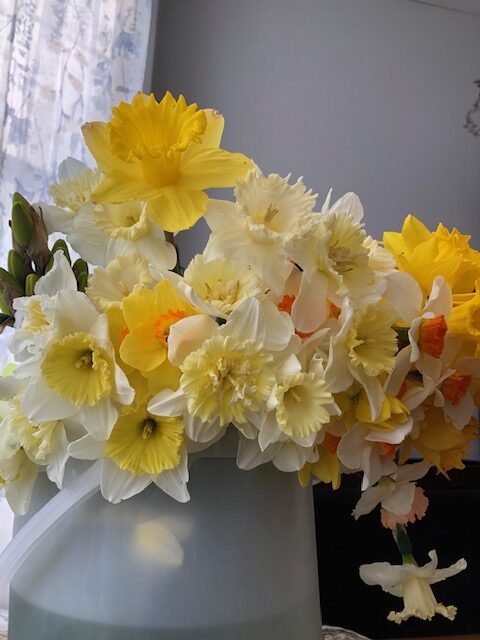

March 2, 2022
Leave a Comment
Leave a Reply
LET'S CONNECT
Let’s work together to create something special.
Comments